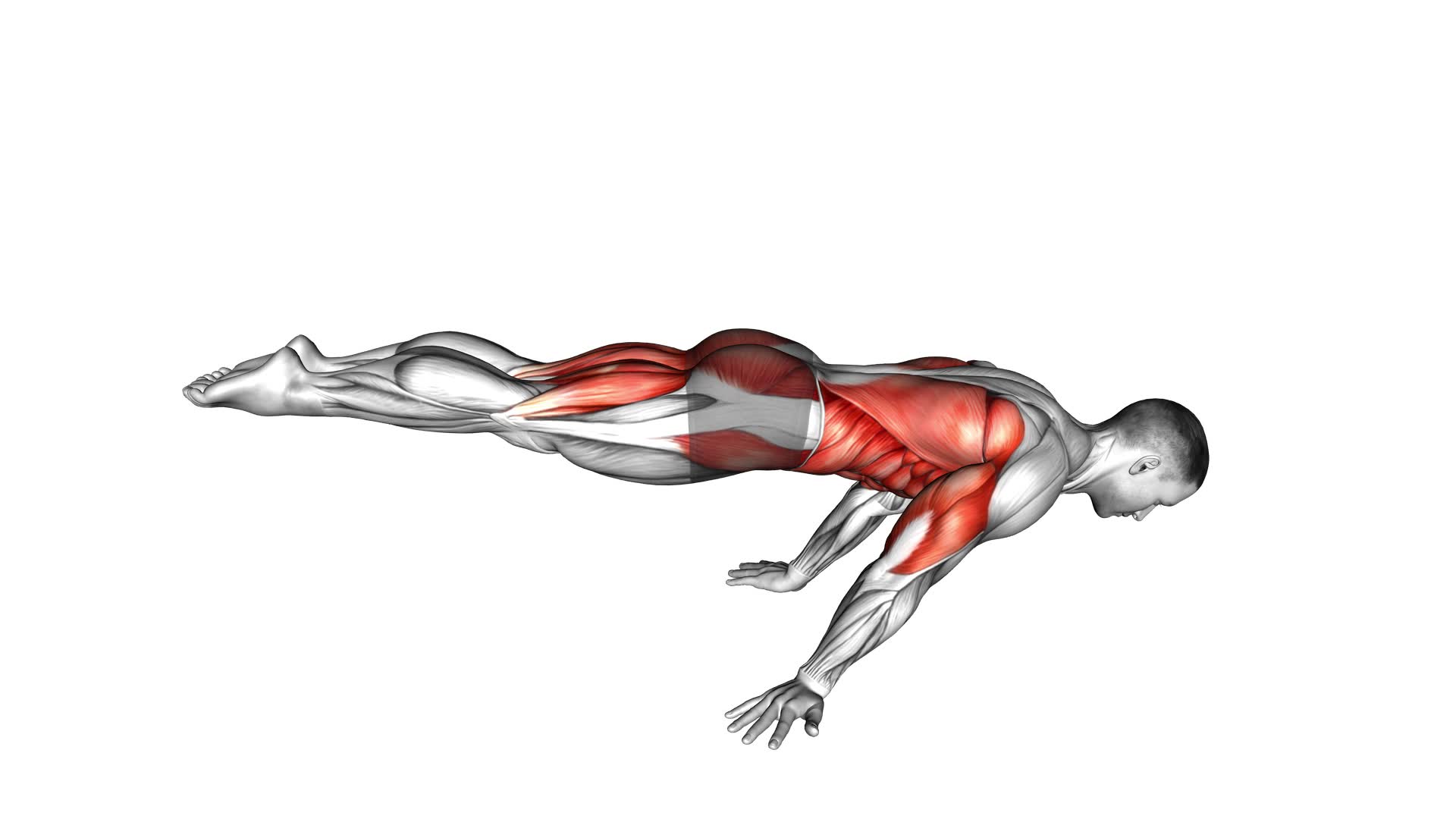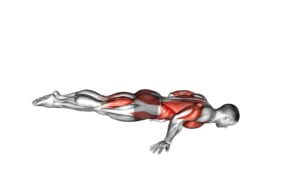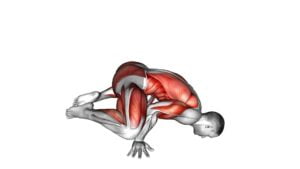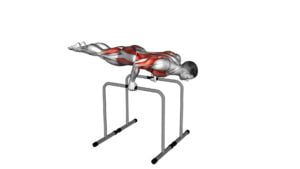Full Planche – Video Exercise Guide & Tips

Looking to master the full planche? This video exercise guide and tips will show you how.
Watch This Exercise Video
You'll discover the benefits of this challenging move, learn proper form and technique, and find progression exercises for beginners.
Plus, we'll share advanced variations and challenges to take your planche to the next level.
Don't let common pitfalls hold you back – we've got tips to help you overcome them.
Get ready to achieve an impressive full planche with our comprehensive guide.
Key Takeaways
- The Full Planche is a challenging exercise that offers numerous benefits, including improved upper body strength and overall fitness level.
- Proper form and technique are essential for performing the Full Planche correctly, including maintaining a straight line from head to toes and engaging core muscles.
- Beginners can start with progression exercises like the Tuck Planche and Frog Stand to build strength and stability.
- Advanced variations and challenges, such as Full Planche Push-ups and One-arm Full Planche, can be incorporated to continue progressing and improving in the exercise.
Benefits of the Full Planche
One benefit of the Full Planche is improved upper body strength. This advanced calisthenics exercise requires significant physical strength and muscle development. By performing the Full Planche, you engage multiple muscle groups in your upper body, including your shoulders, chest, arms, and core. As you hold your body parallel to the ground with only your hands touching the floor, you're essentially supporting your entire body weight using these muscles. This intense workout helps to strengthen and tone your upper body, resulting in increased muscle mass and definition.
The Full Planche specifically targets the muscles in your shoulders and arms, such as the deltoids, triceps, and biceps. These muscles are responsible for movements like pushing and pulling, and the Full Planche challenges them to work in an isometric contraction, where the muscle length remains the same. This helps to build endurance and strength in these muscles, allowing you to perform other exercises and activities with greater ease.
Improving your upper body strength through the Full Planche can have a positive impact on your overall fitness level. It can enhance your performance in various sports and activities that require upper body strength, such as rock climbing, gymnastics, and martial arts. Additionally, having a strong upper body can improve your posture and reduce the risk of injury in everyday activities.
To maximize the physical benefits of the Full Planche, it's crucial to maintain proper form and technique.
Proper Form and Technique
To maintain proper form and technique during the Full Planche, it's essential that you focus on correct body alignment and engage the targeted muscle groups effectively. Here are some key points to keep in mind:
- Keep your shoulders protracted and your scapulae propped up. This will help you distribute the load evenly and prevent excessive stress on your joints.
- Maintain a straight line from your head to your toes. Avoid sagging or arching your back, as this can compromise your form and reduce the effectiveness of the exercise.
- Engage your core muscles by contracting your abs and glutes. This will help stabilize your body and improve your balance during the Full Planche.
- Proper hand placement is crucial. Position your hands slightly wider than shoulder-width apart and spread your fingers for better stability and grip.
Common mistakes to avoid include rounding your shoulders, allowing your lower back to sag, and not engaging your core muscles properly.
Progression Exercises for Beginners
To progress as a beginner in mastering the Full Planche, it's important to incorporate a series of exercises that gradually build strength and stability in the targeted muscle groups. Modified progressions are a great way for beginners to work towards achieving the Full Planche.
One modified progression is the Tuck Planche. Start by sitting on the floor with your legs tucked in and your hands placed on the ground beside your hips. Slowly lean forward, shifting your weight onto your hands, and lift your feet off the ground. Hold this position for a few seconds before releasing.
Another modified progression is the Frog Stand. Begin in a squat position, placing your hands on the ground in front of you. Bend your elbows and rest your knees on the backs of your upper arms. Lean forward, using your arms to support your body weight.
These modified progressions help to strengthen the necessary muscles while also improving balance and body control.
When performing these exercises, it's important to be aware of common mistakes. One common mistake isn't engaging the core muscles enough. To avoid this, focus on contracting your abdominal muscles and keeping your body tight throughout the movement.
Another mistake isn't maintaining proper wrist alignment. Make sure your wrists are stacked directly under your shoulders to prevent strain and injury.
Lastly, rushing the progressions is another common mistake. It's essential to take your time and gradually increase the difficulty of the exercises as you build strength and stability.
Advanced Variations and Challenges
To further challenge yourself and push the limits of your strength, incorporate advanced variations of the Full Planche into your training routine. These advanced progressions won't only test your physical capabilities but also help you develop greater control and stability.
Here are four challenging variations to consider:
- Full Planche Push-ups: Once you have mastered the basic Full Planche, try integrating push-ups into the movement. Lower your body down into a push-up position while maintaining the planche position, and then push yourself back up. This adds an extra level of difficulty and requires even more upper body strength.
- One-arm Full Planche: Once you're comfortable with the standard Full Planche, attempt to perform the exercise with only one arm. This variation places an incredible amount of stress on your core and upper body, demanding exceptional strength and stability.
- Full Planche Press: This movement combines a planche with a handstand press, requiring tremendous shoulder strength and control. Start in a handstand position and slowly lower your body down into a full planche, and then press back up to the handstand. This progression will challenge your entire upper body.
- Full Planche on Rings: Performing the Full Planche on gymnastic rings introduces an unstable surface, forcing you to engage your stabilizing muscles even more. This variation requires exceptional balance and control.
Incorporating these advanced variations into your training routine will help you continue to progress and improve. However, it's important to note that due to the high intensity and demands of these exercises, you should limit your training frequency to prevent overtraining and injury.
Now, let's move on to some tips for overcoming common pitfalls in your Full Planche journey.
Tips for Overcoming Common Pitfalls
To overcome common pitfalls in your journey to mastering the Full Planche, focus on these key tips.
One of the most common mistakes people make when attempting the Full Planche isn't having enough upper body strength. Strengthening exercises that target the shoulders, chest, and triceps are essential for building the necessary strength. Incorporate exercises like push-ups, dips, and handstand push-ups into your training routine to develop the required upper body strength.
Another common mistake isn't properly engaging the core muscles. The Full Planche requires significant core strength to maintain balance and stability. To strengthen your core, include exercises like planks, hollow holds, and leg raises in your training regimen. These exercises will help you develop the necessary core stability for the Full Planche.
Furthermore, many people struggle with finding the correct body alignment during the Full Planche. It's crucial to maintain a straight line from your fingertips to your toes, with your body parallel to the ground. Practice holding the planche lean position to work on body alignment and build the necessary strength.
Lastly, be patient and consistent with your training. The Full Planche is a challenging skill that takes time to master. Stay dedicated and focused on your goals, and you'll eventually overcome these common pitfalls and achieve the Full Planche.
Frequently Asked Questions
How Long Does It Take to Master the Full Planche?
To master the full planche, it takes time and consistent effort. Achieving this advanced move requires building strength in your shoulders, core, and wrists.
Progressions for the full planche include exercises like tuck planche holds and planche leans. As you gradually increase your strength and stability, you can progress to more challenging variations.
Are There Any Specific Muscles That Are Targeted During the Full Planche Exercise?
During the full planche exercise, several specific muscles are targeted. The primary muscles engaged are the shoulders, chest, and triceps. These muscles work together to support your body in the horizontal position.
Additionally, the abs and lower back muscles are activated to maintain stability and balance.
Performing the full planche regularly can lead to increased upper body strength, improved core stability, and enhanced body control.
Can the Full Planche Be Performed on Different Surfaces Like Grass or Sand?
Performing the full planche on unstable surfaces like grass or sand can be challenging but also beneficial. It forces your muscles to work harder to stabilize your body, improving your overall strength and balance.
Training on different surfaces can help you develop greater control and adaptability, as you'll need to adjust to the changing terrain.
However, it's important to start on stable ground and gradually progress to more unstable surfaces to avoid injury and ensure proper form.
What Are Some Common Mistakes Beginners Make When Attempting the Full Planche?
Common mistakes beginners make when attempting the full planche include:
- Not mastering the proper progression techniques, such as building strength in the core and shoulders.
- Rushing into attempting the full planche without first developing the necessary foundation.
Other mistakes include:
- Improper form, such as not keeping the body straight or not engaging the core muscles properly.
It's important to focus on proper technique and gradually progress to avoid injury and maximize results.
Is It Necessary to Have a Certain Level of Upper Body Strength Before Attempting the Full Planche?
Before attempting the full planche, it's important to have a certain level of upper body strength. Proper form is crucial during this exercise to prevent injuries and maximize results.
To build the necessary strength, there are progressions you can follow. These include exercises such as push-ups, handstand holds, and tuck planches.
Gradually increasing the difficulty and intensity of these exercises will help you develop the required strength for the full planche.
Conclusion
In conclusion, the full planche is an advanced exercise that offers numerous benefits for strength and core stability. By following proper form and technique, beginners can progress through various exercises to build the necessary strength and flexibility.
Advanced variations and challenges can further enhance the full planche, providing a continuous challenge for those seeking to push their limits.
With dedication and perseverance, individuals can overcome common pitfalls and achieve mastery in the full planche.

Author
Years ago, the spark of my life’s passion ignited in my mind the moment I stepped into the local gym for the first time. The inaugural bead of perspiration, the initial endeavor, the very first surge of endorphins, and a sense of pride that washed over me post-workout marked the beginning of my deep-seated interest in strength sports, fitness, and sports nutrition. This very curiosity blossomed rapidly into a profound fascination, propelling me to earn a Master’s degree in Physical Education from the Academy of Physical Education in Krakow, followed by a Sports Manager diploma from the Jagiellonian University. My journey of growth led me to gain more specialized qualifications, such as being a certified personal trainer with a focus on sports dietetics, a lifeguard, and an instructor for wellness and corrective gymnastics. Theoretical knowledge paired seamlessly with practical experience, reinforcing my belief that the transformation of individuals under my guidance was also a reflection of my personal growth. This belief holds true even today. Each day, I strive to push the boundaries and explore new realms. These realms gently elevate me to greater heights. The unique combination of passion for my field and the continuous quest for growth fuels my drive to break new ground.







